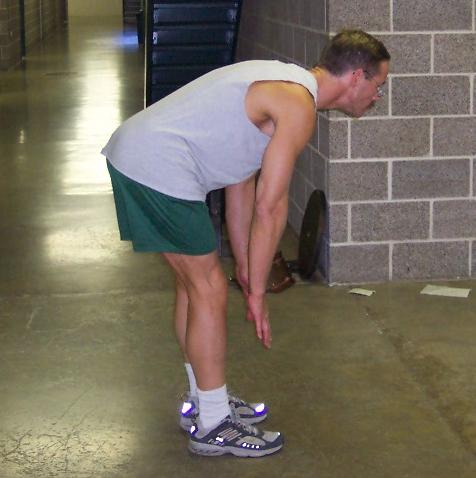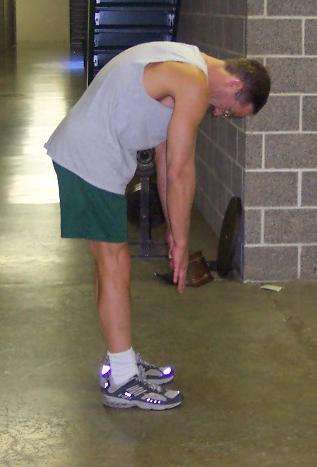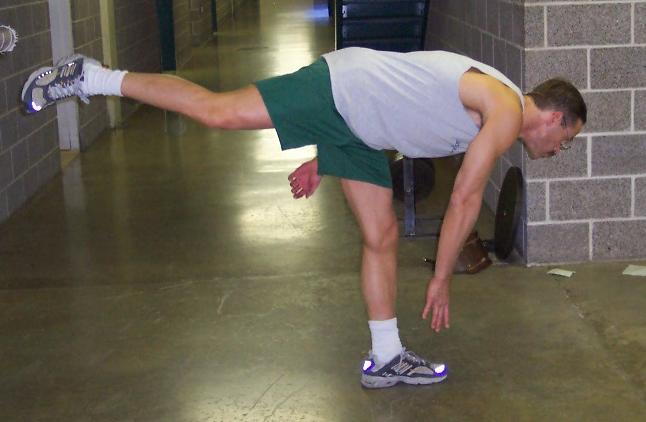


balls of your feet and keeping your back
straight reach for the floor, trying to touch your tummy
to your thighs. As you reach, your weight moves back
to your heels. Yes, your butt goes back too.
get you hurt. Don't do that.
leg in a straight line. Balance is trickier, but this
is one to do if you have back trouble. Be sure to start with
your weight on the balls of your feet and transfer it back to
your heels.